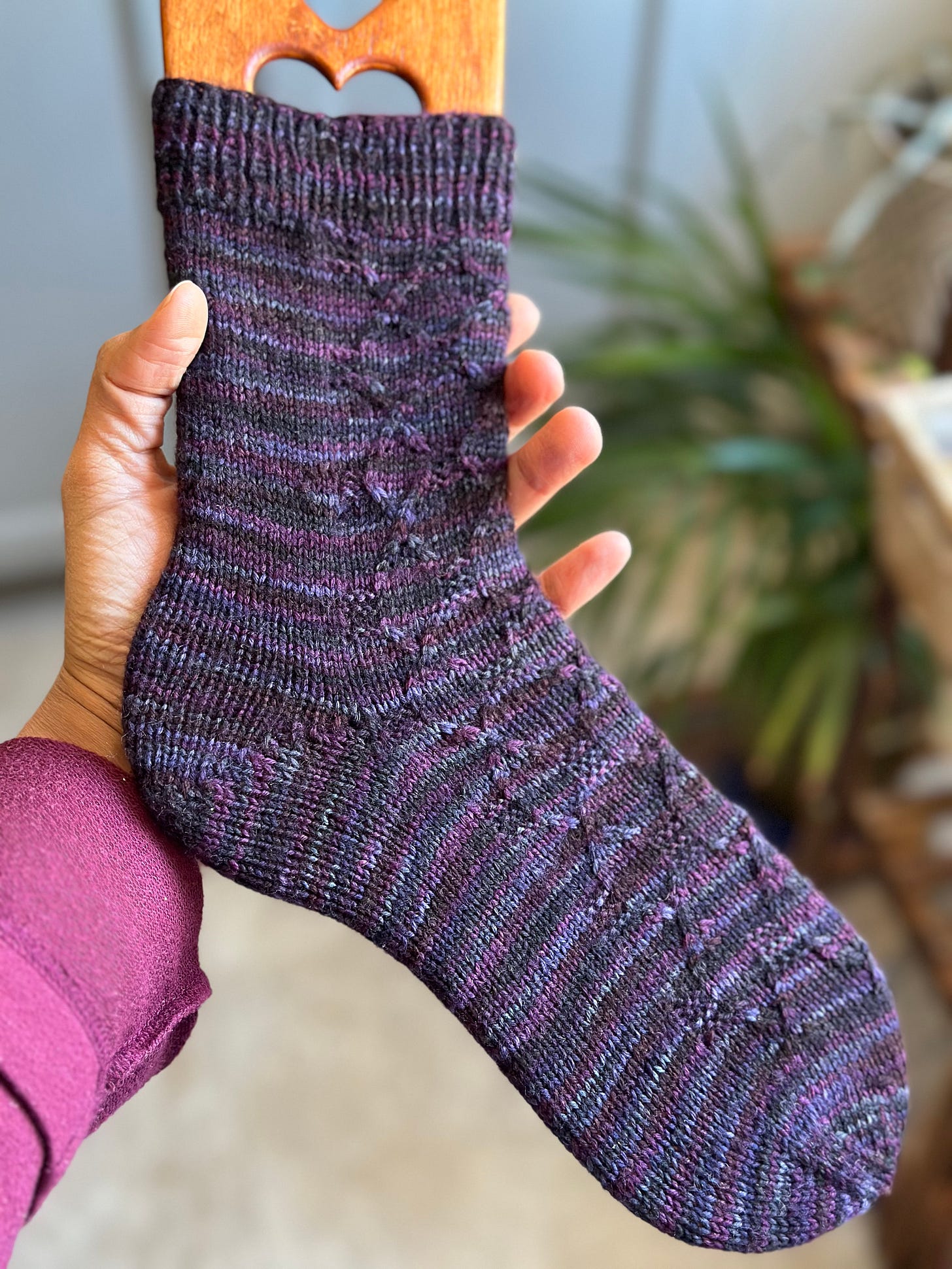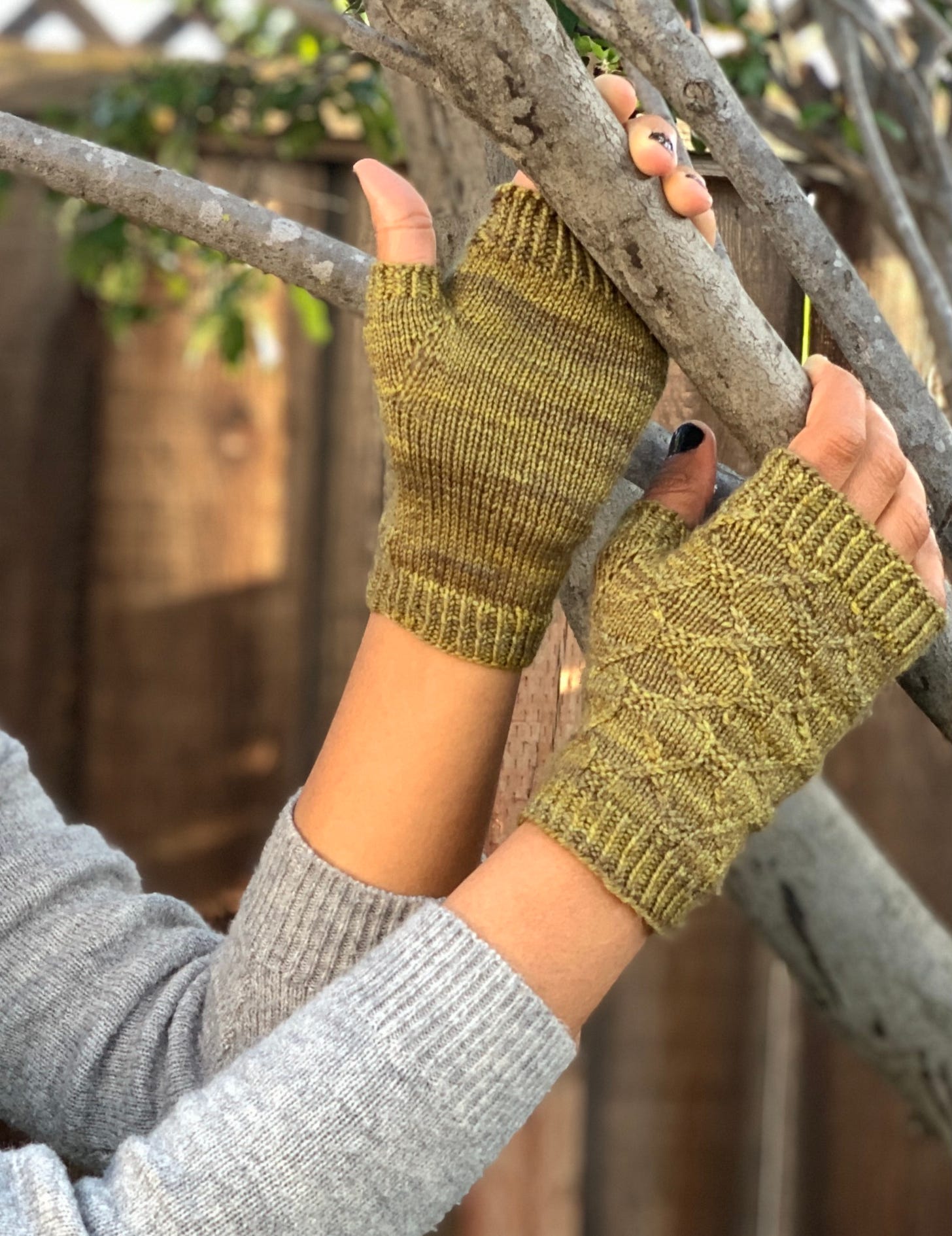Some sustainable aspects of knitting...
we probably don't think about often, CraftDoodling Design News, etc.
Thank you for all your support and kind comments and feedback to this weekly letter. I really enjoy this process of thinking, organizing my thoughts and sharing some nuance or other about our knitterly lives with you all. It is proving to be a grounding practice for me. 💙 I hope you enjoy reading it as much as I do writing it.
This season, I have been gratefully wearing my handknits, a lot. Some of them have lasted for quite a few years now and it is such a comfort and joy to be able to reach for them time and again. I have a few handknit sweaters and a number of accessories 🧣 enough to mix and match with my store-bought clothing and rotate wearing through the cold season.
However, at some point, I began to contemplate the sustainability of my knitting practice. I do dream of a mostly handmade wardrobe from time to time. But does pursuing something like that make any difference?
I decided to looked up the definition for sustainability first and go from there. These turned up in my search:
Capable of being sustained; of, relating to, or being a method of harvesting or using a resource so that the resource is not depleted or permanently damaged.The term sustainability is broadly used to indicate programs, initiatives and actions aimed at the preservation of a particular resource. However, it actually refers to four distinct areas: human, social, economic and environmental– known as the four pillars of sustainability.Then I started thinking about my own knitting habits
I do not always opt for the most eco-friendly yarn choices. 🧶 I purchase acrylic occasionally for making gifts for knit-worthy people who don't have the time to hand wash.
Although I LOVE hand-dyed yarn, I haven't yet found it in my heart to actually knit socks with it and wear them on my feet. At least not yet. Instead, I use commercial sock yarn 🧦 like Patons Kroy, Knit Picks, Regia for making socks for me and my family.
I reserve hand-dyed, breed-specific yarn from my favorite dyers (sometimes generously gifted by them 💞) for design work - shawls and accessories mostly.
Initially it felt like I was not doing much after all. But then I realized I have to actually narrow down to the context of an average knitter's lifestyle, and think about where sustainability truly comes into play.
Well, here are some thoughts:
💖Knitting is a sustainable habit
If you have chosen to knit, you are contributing to sustainability already. You have opted out of fast fashion, which contributes to enormous carbon emissions, water waste, landfills, and chemical wastes, and it is notorious for its poor working conditions for laborers.
💖Knitting alters shopping habits
Raise your hand 🙋🏼♀️ if you have seen a sweater or a scarf in a store and thought "I can make that!". Although we rarely follow through on these notions, the fact that we consider making them suggests that knitting may have helped curb some impulsive purchases. This is significant in a world where we can receive almost any item at our doorstep within 24 hours of setting eyes upon it.
Now, I understand that "I can make that!" mindset can sometimes lead to knitters accumulating considerable stashes of yarn. We'll come to that in a moment.
💖Knitting nudges us towards better laundry habits 🧺 Throughout our knitting journeys, we gradually learn valuable habits that help preserve and extend the lifespan of our cherished handmade creations.
Wool can be washed less frequently.
Any handmade item (irrespective of fiber content), deserves hand washing.
Using gentle cycles in washer and dryer for superwash wool.
We use eco-friendly products like wool wash, sweater soap, lint remover.
Storing our yarn stash as well as handmades with care.
Most of us try to adapt some version of such habits as much as our lifestyle allows.
💖Knitting shapes our clothing choices 👕 As knitters we are always eager to learn new things and incorporate them into our handmades. I am yet to meet a knitter who doesn't get excited about finishing techniques and small refinements that can improve the look and finish of a handknit. We gain valuable insights into our own fit preferences when we try to make a garment for ourselves. Learning about visible mending techniques is currently very popular too.
I like to think that such improved tastes can influence our choices when selecting store-bought items as well. Our appreciation for improved finishing, better fiber content, and precise fit can potentially curb impulsive purchases.
💖Incorporating sustainability in yarn choices 🧶 One of the most direct ways to incorporate sustainability in our craft lies in the choice and usage of materials. Eco-friendly, locally-produced, ethically-sourced, handspun, hand-dyed, natural fiber, and breed-specific are all valuable keywords to consider when purchasing yarn for our next project. However, we recognize that access to sustainable practices and products can vary for individuals.
Balancing accessibility and sustainability is crucial when making material choices. Here are some simple things we can do to promote better choices.
Maintaining a well-organized stash, tools and notions.
Keeping a knitting journal will serve as a valuable reference for future projects.
Prioritize using stash and leftover yarn whenever possible.
Learn about various fiber options and their environmental impact.
Share your knowledge with others to foster a community that values sustainability.
What are some sustainable practices you have adapted in your own knitting? I am eager to know. Please share in the comments.
CRAFTDOODLING DESIGNS UPDATE
Manzil Socks, is almost ready for testing. I will put up a testing call soon. If you like to be notified as soon as my tests go up, please JOIN MY SLACK COMMUNITY and send me a private message.
I will add you to “test-announcements” channel where I post my testing calls first before they are out in other social media. 🫶
‘Pretty Little Brioche Scarf’ is ready to be released early March. I can’t wait to show you all the lovely versions my testers are knitting up currently. 💗
I am writing up two classes - one for brand new knitters and the other one is to practice some finishing techniques. Most likely, these will be scheduled in April to be taught at my LYS. I’ll post more details when I am able.
FEATURED PATTERN
I have been wearing my Manzil Mitts for the cold morning walks, these past few days. If you are wondering, Manzil Socks uses the same stitch pattern as these mitts, hence the name.😊
Manzil Mitts is one of my well-loved patterns. ❤️ It is available on Ravelry and Payhip for download.
OTHER THINGS YOU MIGHT LIKE
Just Finished Reading 📚
Essentialism: The disciplined pursuit of less - Greg McKeown
Currently Reading 📚
Something in the water - Catherine Steadman
Watchmen - Alan Moore
Until next time,
Kavitha. ♡
Currently, this newsletter is free to subscribe. If you like my work, please consider these other ways to support:
Click the ❤️ at the bottom of this post. If you are reading from your email inbox, this will open substack in web browser. Please allow it to open and make sure you see the red heart.
Share your thoughts in comments. I am here for the conversations. I hope you are too!
Introduce this newsletter to a friend!
Buy my patterns. I hope you find something you like.
I accept any of these with immense gratitude. Thank you!






I also dream of a wardrobe I’ve made (not sure how that will happen since I don’t sew!), but it’s slow going. I abhor fast fashion and try to limit my purchase and then wear them as long as they will last.
I’ve knitted socks for years so we buy few socks. Even though I use mostly the brands you mentioned, it seems more sustainable than buying and tossing. When I use wool, I try to know where it’s sourced, especially merino which has unique issues.
I also use acrylic when necessary for those who can’t care for natural yarns. I don’t know if any of this makes a difference, but I’m still going to do what little I can.
For some reason, my like isn’t being counted. Substack has been glitchy for me today. I just went through all of my stash, reorganized and even destashed some. Compared to collecting many other things, my stash is sustainable- when I take it from the collection it becomes my hobby- knitting. It’s double the pleasure this way. That’s my story and I’m sticking to it. Also, when I want to show affection, I knit something, instead of buying something. Thank you for this discussion.